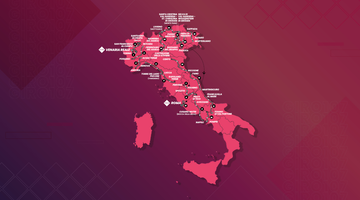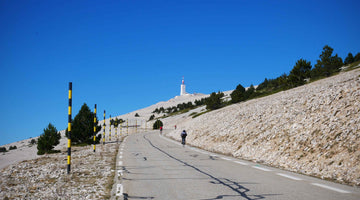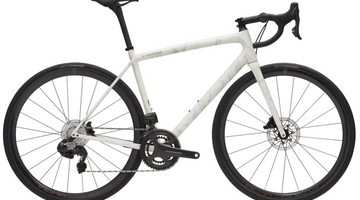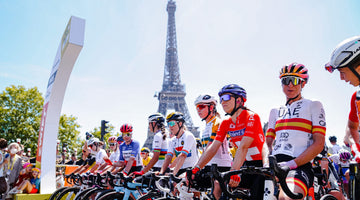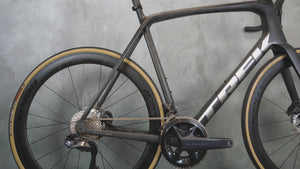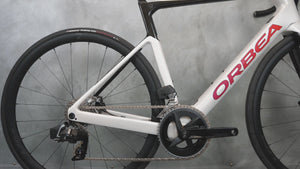Adjusting your road bike: our experts' tips
In this Article
Published on September 28, 2023
Adjusting your road bike is an essential step before you start riding. Good bike tuning can save you from injury. Cycling is a sport in which the same movement is repeated thousands of times in a single ride. If a muscle or joint performs even the slightest movement incorrectly, you can quickly develop pain.
Adjusting your bike will also enable you to travel long distances without discomfort or discomfort. Finally, the settings will help you to adopt a good position on the bike and therefore increase your performance ⏱
How to properly adjust your bike? How to adjust a bike saddle? In this article, we'll explain the various basic adjustments for a road bike. Let's get out the workshop stand and the toolbox, and get going! 🔧
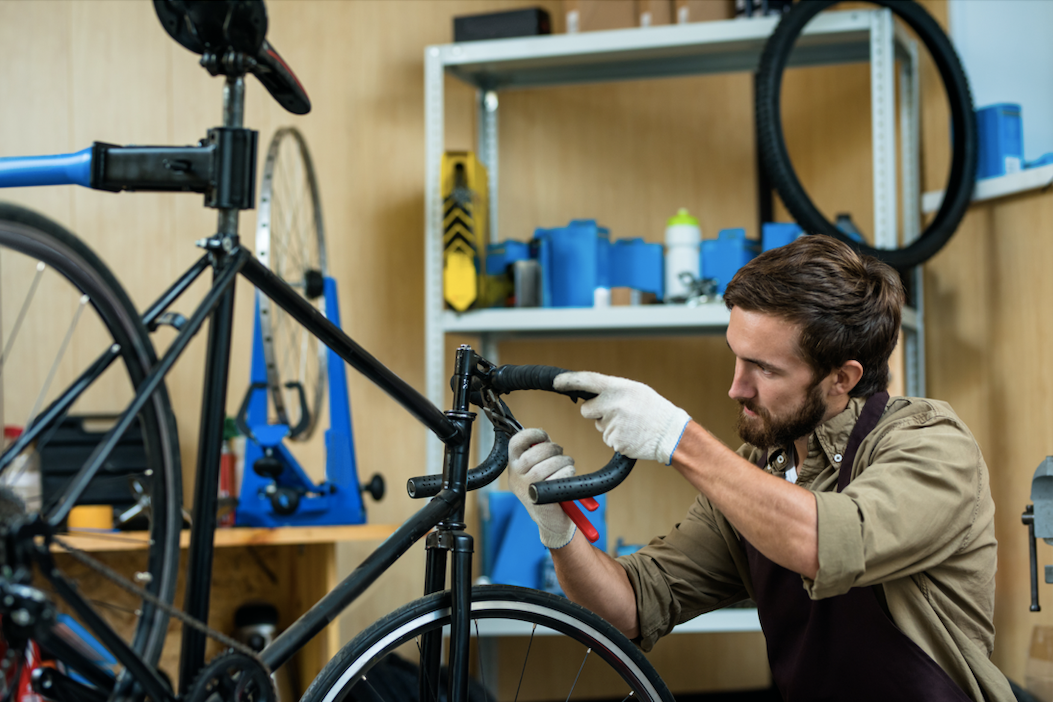
Adjusting your road bike saddle
Saddle adjustment is one of the most important factors in determining your pedaling position.
Adjusting your bike's saddle height
Generally speaking, this is the first thing to be taken care of when adjusting a bike. This is where the seat tube fits into the frame.
There's a commonly accepted method for adjusting saddle height: with the crank parallel to the seat tube, the leg must be straight when the heel is on the pedal.
This ensures that the leg is not fully extended during pedaling (as you pedal with the forefoot). It's not super-precise, but it has the merit of leading to an injury-free setting.
If you want to fine-tune the setting, you'll have to get out the tape measure. 📏
The slightly more "scientific" method involves measuring the distance from the ground to your crotch and multiplying by 0.885. The result is usually the ideal length between the saddle and the bottom bracket axle.
💡 To make your measurement as accurate as possible, stand with your shoes off, facing a wall and holding a book between your legs, firmly against your perineum. Make a small mark on the wall at the top of the book (with a pencil, which will be easier to erase). 😉). Using your tape measure, measure the height of the mark.
Saddle setback
Yes, saddle height isn't everything! Saddle kickback is an important factor too. But what does it mean? Simply put, it's the adjustment of your saddle lengthwise, from front to back. This adjustment is made directly under the saddle. Normally, you can loosen the part holding the saddle a little to slide it forwards or backwards.
For this adjustment, you'll need a plumb bob. If you don't have one, you can also attach a tool to a string so that it's perpendicular to the ground. To take the measurement, sit on the saddle, foot on the pedal with the crank parallel to the ground (foot towards the front of the bike).Starting from your kneecap, the plumb line should fall in line with the pedal axis.. In this way, the power developed by your thighs is transmitted directly to the pedals, without putting too much strain on your knee.
To check that your setting is correct, you can place your hands at the bottom of the handlebars and look at your front wheel. If the wheel axle is hidden by the Handlebarthen the saddle offset is relatively well adjusted.
Saddle tilt
Final adjustment: the tilt. In general, this is done via a knob under the saddle.
With a level, make sure the saddle is horizontal. However, it can be tilted (very) slightly forward to relieve pressure on the perineum.
Adjusting handlebars

Often neglected, adjusting the height of your bike's handlebars is very important for pedaling in a good position.
Handlebar height
There's no tricky calculation here. Adjusting the height of your road bike's handlebars is often as simple as deciding between comfort and aerodynamicseven if, with practice, you can be comfortable in the aero position (just ask Remco Evenepoel or Filippo Ganna...).
With lower handlebars, your upper body will be leaning more forward. You'll offer less resistance to the wind. Be careful, though, as a handlebar that's too low will fatigue your back muscles and may reduce your ability to breathe.
A high handlebar will obviously be more comfortable, but you may regret it a little on a well-cleared plain with a headwind. It's a question of balance.
To vary the height of the handlebars, you need to adjust the height of the stem at the head tube.
Handlebar inclination
Here too, you need to find the setting that suits you best, the one where you feel most comfortable pushing hard on the pedals while limiting your exposure to the wind.
To do this, unscrew the stem bolts that hold the handlebars and adjust the inclination of the handlebars. Handlebar depending on the position you want to adopt.
Adjusting bicycle pedals
How do you position your foot on a bicycle pedal?
To perform well on a bike, you first need to pedal correctly. No matter how powerful you are, if you don't transmit your force properly to the crankset, you'll always lose precious watts unnecessarily.
For optimum pedaling, the pedal axle should be at the level of the big toe joint (the bump on the front of the foot).
Adjusting cleats for automatic pedals
There's nothing to do on the bike for this adjustment (apart from installing the pedals, of course...). It's the position of your cleat on your bike shoe that determines the position of your foot.
To be correctly installed, make sure your support point is at the big toe joint. Put on the shoe and make a mark there. For lateral thrust, your thrust should be in the middle of the foot. Here too, don't hesitate to make a small mark. This way, you should have a fairly precise idea of the ideal location for your wedge.
A word of advice: test your shims when you're standing still. Sometimes, if the pedal is incorrectly tightened, it can be difficult to remove... But in an emergency, you need to be able to unclip it quickly.
👉 "How do I know if my bike is too big? To be sure of choosing the right bike size, rediscover our article on the subject !
Have your bike professionally adjusted: the benefits of a postural study

We've shared with you the main points to check when tuning your road bike yourself. Having said that, we must remind you that every body has unique proportions, and every cyclist has particular needs. Depending on your flexibility, any previous injuries you may have, and the intensity of your cycling, the adjustments described above may not be appropriate.
The best way to be sure you're riding a properly adjusted bike, perfectly suited to your morphology, is to carry out a postural study.
It's a common misconception that this service is reserved for professionals or those who ride a lot. But it's not, even at the amateur level, postural study offers numerous benefits. It's often the solution to many problems (some of which you may not even be aware of).
Even if you feel good on the bike, sometimes your body has become accustomed to poor posture.. And if you don't feel any pain now, it can always happen later...
Based on a thorough diagnosis of your experience, your pedaling style, your musculature and the current settings of your road bike, the experts will make modifications that will really improve your riding. The gain in comfort and performance will be clear, even if you only ride a couple of hours a week.
Admittedly, the cost of 200 or 300 euros may be off-putting at first (especially if you don't feel any discomfort), but it's a real investment for the future. Remember, it's the bike's job to adapt to your morphology, not yours!
Think about it! In any case, at The Cyclist Housewe recommend it to get the most out of our road bikes Certified Pre-Owned !
🔧 In a nutshell, the main easy adjustments of a road bike are as follows:
- saddle height, inclination and recoil to avoid injury;
- handlebar height and tilt to balance comfort and aerodynamics;
- position of cleats on shoes to find the optimum support point.
Don't hesitate to turn to a professional posture expert if you have any doubts, or if you want to make sure your bike fits properly. It's highly recommended, whether you're a short-distance or long-distance rider. gran fondo !
… 😉 Enjoy the article? You'll love the newsletter! Sign up to receive exclusive content every week: our editorial, your favorite bike, etc.












